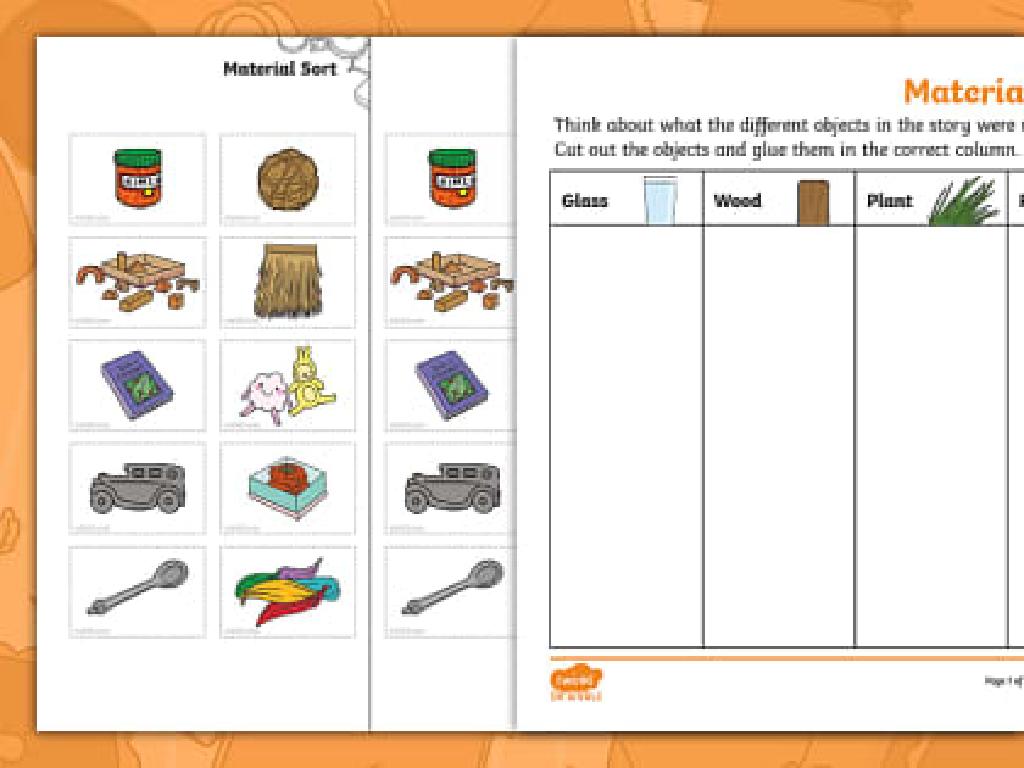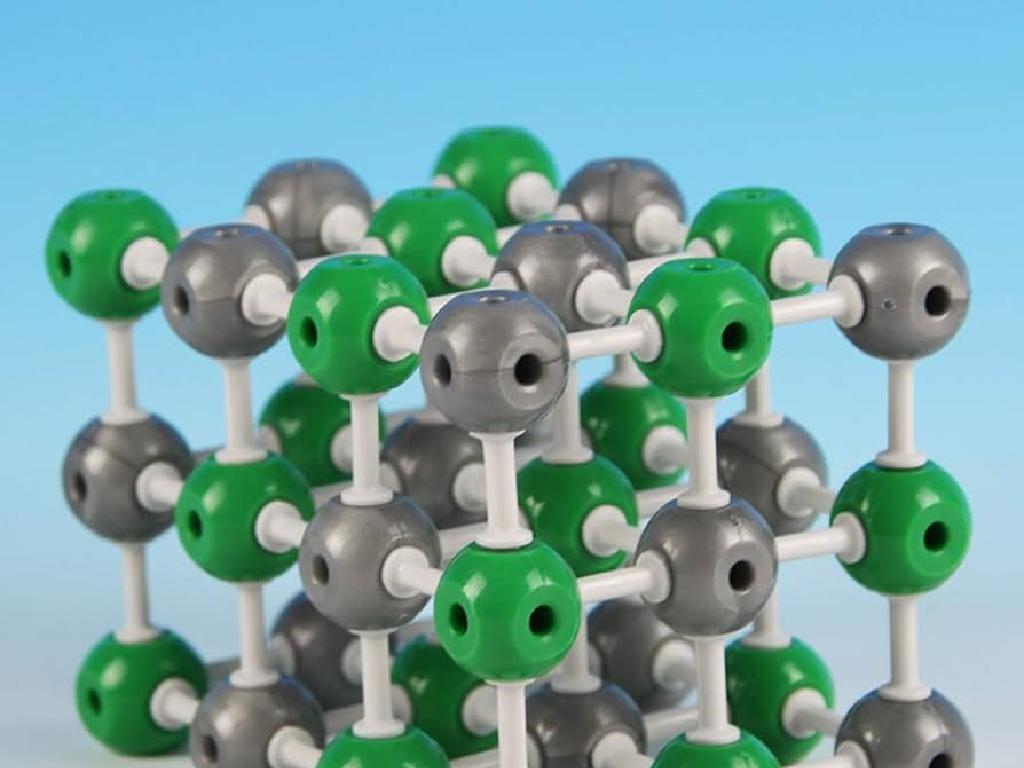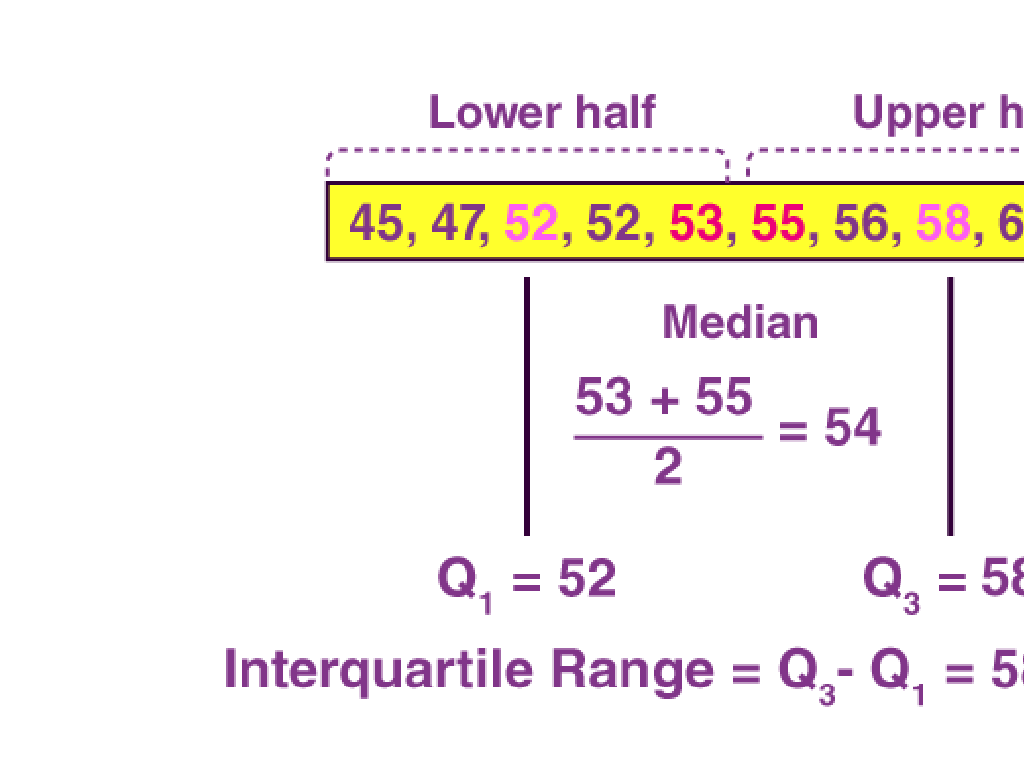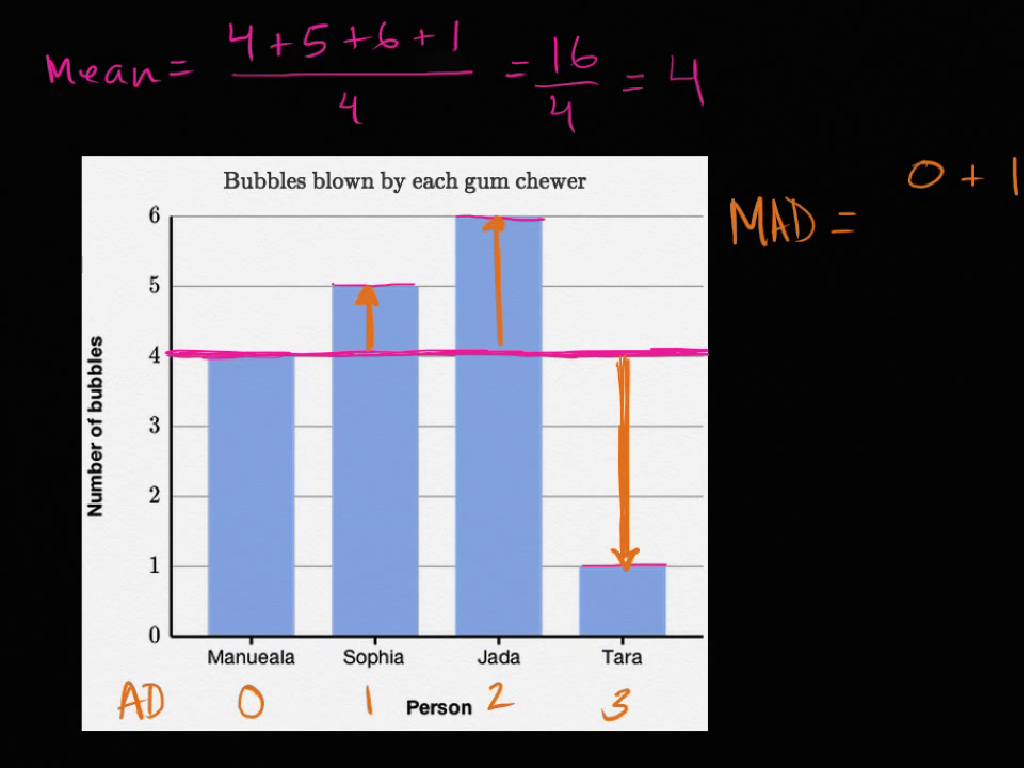Identify Plant Parts And Their Functions
Subject: Science
Grade: Second grade
Topic: Plants
Please LOG IN to download the presentation. Access is available to registered users only.
View More Content
Welcome to the World of Plants!
– Learn plant parts
– Roots, stem, leaves, flowers, and fruits
– Functions of each part
– Roots absorb water, leaves make food, and flowers attract bees
– Importance of plant health
– Healthy plants can grow big and strong
– Junior botanists in training
|
In today’s lesson, we will explore the different parts of a plant and understand the role each part plays in keeping the plant alive and healthy. We’ll look at roots, stems, leaves, flowers, and fruits, discussing how roots anchor the plant and take in water and nutrients, while leaves are the food factories powered by sunlight. Flowers are not just pretty; they attract pollinators like bees, which are essential for the plant to produce fruits and seeds. By the end of the lesson, students will have a basic understanding of plant biology and will be on their way to becoming junior botanists. Encourage the students to observe plants around them and think about the function of each part they see.
What Are Plants?
– Plants are living organisms
– Like us, plants are alive and need care
– They grow with stem, leaves, roots
– The stem supports, leaves catch sunlight, roots absorb water
– Plants make their own food
– Photosynthesis uses sunlight to create food
– They’re important for us and Earth
– Plants give us oxygen and food, and help nature
|
This slide introduces the concept of plants to second-grade students. Begin by explaining that plants are living things, just like animals and humans, and they need water, air, and sunlight to live. Discuss the main parts of a plant: the stem, leaves, and roots, and their functions. The stem holds the plant up and carries water to different parts, leaves use sunlight to make food, and roots keep the plant in the soil and absorb water and nutrients. Highlight the process of photosynthesis, where plants use sunlight to make their own food. Emphasize the importance of plants in providing oxygen for us to breathe and food for many creatures, including humans. They also create habitats for animals and are crucial for the environment. Encourage students to think about how plants affect their daily lives and the world around them.
Plant Parts and Their Functions
– Roots: Support and nourishment
– Roots keep the plant stable and absorb water and nutrients.
– Stem: Plant’s backbone
– The stem holds the plant upright and moves nutrients and water.
– Leaves: The food factories
– Leaves use sunlight to make food for the plant through photosynthesis.
– Flowers: Creators of seeds
– Flowers are the reproductive part, producing seeds for new plants.
|
This slide introduces the basic parts of a plant and their functions, tailored for second graders. Roots are like the plant’s anchor and straw, stems are like its backbone, leaves are the food-making machines using sunlight, and flowers are where new plant life begins. Encourage students to think of a plant as a little factory that makes its own food and can create new plants. Use simple language and relatable analogies to help them understand. You can bring a plant to class to point out each part as you explain. For homework, students could draw a plant and label its parts or even start growing a simple plant, like a bean, to observe these parts in action.
Roots: The Plant’s Anchor
– Roots grow under the ground
– They absorb water and minerals
– Like a straw, roots drink up water and nutrients needed for growth
– Roots keep the plant stable
– They act like an anchor to hold the plant in soil
– Roots store food for the plant
– Some roots can also save food for later, like carrots!
|
This slide introduces the function of roots in plants. Explain that roots are like the foundation of a house, keeping the plant firmly in place in the soil. They are also like a straw, absorbing water and minerals that the plant needs to grow. Discuss how roots prevent the plant from falling over, especially when the wind blows. Highlight that some roots, like those of carrots and potatoes, can store food which the plant can use to grow. Encourage students to think of examples of roots they have seen or eaten. You can bring in a potted plant to show the roots or use pictures to help visualize the concept.
Stem: The Plant’s Highway
– Stems transport water and nutrients
– Like a straw, stems move water from roots to leaves
– They support the plant’s structure
– Stems are like a plant’s skeleton
– Stems hold leaves up to the light
– Leaves reach for sunlight to make food
|
The stem is a crucial part of a plant, acting as a transportation system that carries water and nutrients from the roots to the leaves, where photosynthesis happens. It’s important for students to understand that without the stem, the rest of the plant would not get the necessary ingredients to grow. The stem also provides support, keeping the plant upright and stable, and positions the leaves so they can get as much light as possible for photosynthesis. Use examples like straws for water and building frames for support to help students visualize the stem’s functions. Encourage them to touch and observe the stems of different plants to see how they support and feed the plant.
Leaves: The Plant’s Kitchen
– Leaves make food via photosynthesis
– Using sunlight, leaves transform water and carbon dioxide into food and oxygen.
– They absorb sunlight for energy
– Take in carbon dioxide, release oxygen
– Plants breathe in carbon dioxide and breathe out oxygen, which we need!
– Essential for plant and human life
|
This slide introduces the concept of photosynthesis, where leaves are described as the ‘kitchen’ of the plant, creating food that fuels growth. Photosynthesis is the process by which plants use sunlight to convert water and carbon dioxide into glucose, a type of sugar that plants use for energy. It’s important to emphasize that this process is not only crucial for the plant’s survival but also for humans and other animals, as it produces the oxygen we breathe. Encourage students to think about the importance of leaves and ask them to observe leaves of different plants as a part of their learning.
Flowers: The Plant’s Reproduction
– Flowers produce seeds
– Seeds are the start of a new plant life.
– Seeds become new plants
– From tiny seeds, mighty plants grow.
– Flowers attract helpful insects
– Insects like bees are attracted to flowers for their nectar.
– Bees assist with pollination
– Bees moving pollen helps plants make seeds.
|
This slide introduces the concept of reproduction in plants, focusing on the role of flowers. Flowers are not just for beauty; they are crucial for making seeds, which are the beginning of new plant life. When seeds are planted, they can grow into new plants, continuing the life cycle. Flowers often have bright colors and sweet scents to attract insects, such as bees, which are essential for pollination. Pollination occurs when bees collect nectar and, in the process, move pollen from one flower to another, helping plants to produce seeds. Encourage students to think about how flowers in their own gardens or local parks contribute to the growth of new plants and the importance of insects in this process.
Fruits and Seeds: Nature’s Cycle
– Fruits safeguard seeds
– Like a shield, fruits cover the seeds from harm.
– Seeds nestle inside fruits
– Just like a treasure, seeds hide within the fruits.
– Planting seeds grows new plants
– When seeds touch the soil, they sprout into new life.
|
This slide introduces the relationship between fruits and seeds and their roles in the life cycle of plants. Fruits act as a natural protector for seeds, much like a helmet for a head, ensuring that seeds can mature safely. Seeds are often found inside fruits and carry the potential for new plant life. When these seeds are placed in the soil and given the right conditions, they will grow into new plants, continuing the cycle of life. Encourage the students to think of fruits as ‘seed protectors’ and to understand the importance of seeds in creating new plants. You can bring some fruits to class and show the seeds inside to give a practical understanding of the concept.
Let’s Review: Plant Parts and Their Roles
– Name the plant parts
– Roots, stem, leaves, flowers, and fruits
– Functions of each part
– Roots absorb water, stem supports, leaves make food, flowers attract pollinators, fruits contain seeds
– Importance of plants
– Plants give us oxygen, food, and help the environment
|
This slide is a review session aimed at reinforcing the students’ understanding of the different parts of a plant and their functions. Encourage the students to recall the main parts of a plant: roots, stem, leaves, flowers, and fruits. Discuss the role of each part: roots for absorbing water and nutrients, stem for support and transport, leaves for photosynthesis, flowers for reproduction, and fruits for housing seeds. Emphasize the importance of plants in providing oxygen through photosynthesis, being a source of food, and their role in the ecosystem. Prepare to have an interactive session where students can actively participate and share their knowledge.
Class Activity: Plant Detective
– Observe different plants in groups
– Identify roots, stem, leaves, flowers
– Draw and label plant parts
– Use colors to differentiate each part
– Record findings in science journal
– Write observations like color, shape, size
|
This activity is designed to help students learn about plant parts and their functions by observing real plants. Divide the class into small groups and provide a variety of plants for them to examine. Guide them to identify the roots, stem, leaves, and flowers on each plant. Encourage them to draw and label each part in their science journals, using colors to differentiate between them. Ask them to note characteristics such as color, shape, and size. This hands-on activity will enhance their understanding of plant biology and the role each part plays in the life of a plant. Possible variations of the activity could include using magnifying glasses to observe smaller plant parts, comparing different types of plants, or even a scavenger hunt to find plants with specific characteristics.






